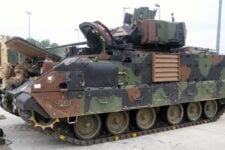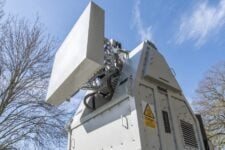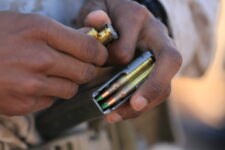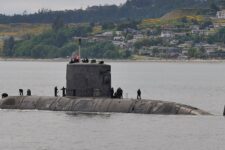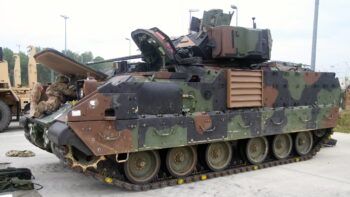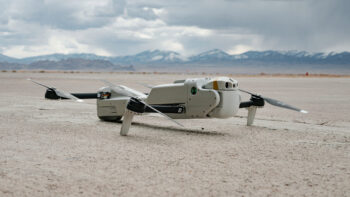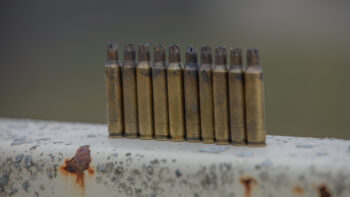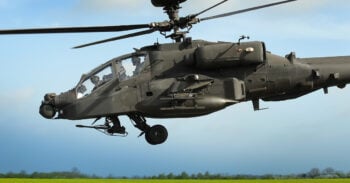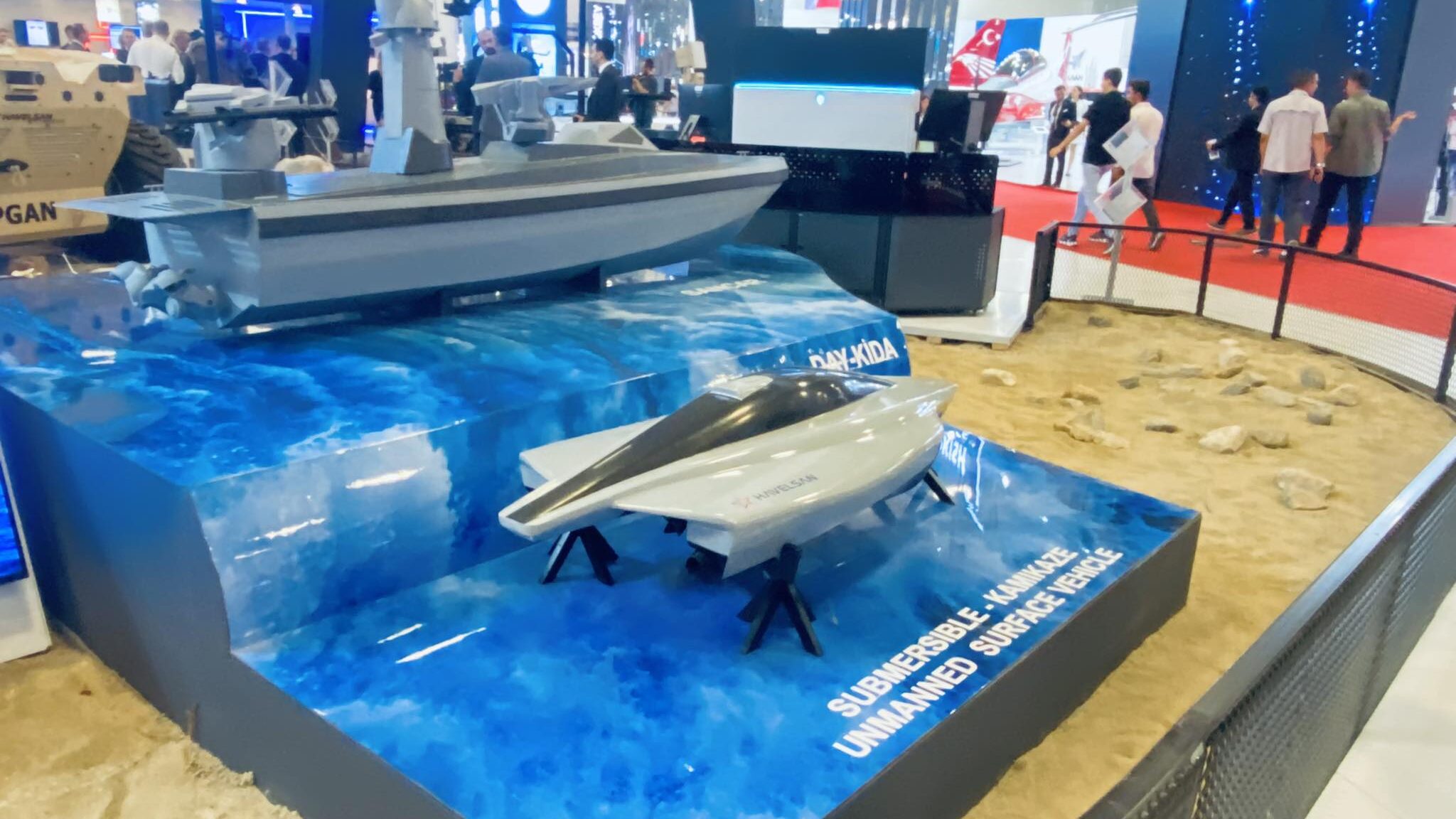
Havelsan’s one-way unmanned surface vehicle Caka is shown off on the IDEF 2023 floor. (Agnes Helou/Breaking Defense)
ISTANBUL — At the start of Turkey’s International Defence Industry Fair today, a focus on homegrown naval weapons systems could not go unnoticed, with a number of companies unveiling new capabilities they hope will find buyers both domestically and abroad.
On day one of the show, which runs through the end of the week, Havelsan unveiled a mockup of its one-way unmanned vehicle called the Caka. This suicide unmanned submarine is 8.5 meters long, with a speed of 60-plus knots and a beam of 3.3 meters. Company officials told Breaking Defense that Caka testing will start by September this year, and it is expected to be operational on a two year timespan.
If all goes as planned, Havelsan officials said the Caka will be capable of protecting infrastructure and naval platforms, as well as conducting anti-access/area denial operations.
Next to Havelsan’s stand was Roketsan, the major Turkish missile producer that used the show to debut its first naval missile defense system. The Levent can carry up to 11 missiles and is mounted with four radars. The company officials at its stand told Breaking Defense that the display system is an actual system and not a mockup, and that the system will be operational in the next two years.
Levent missiles are 128 mm and have a range of 11 kilometers, with passive radio frequency guidance.
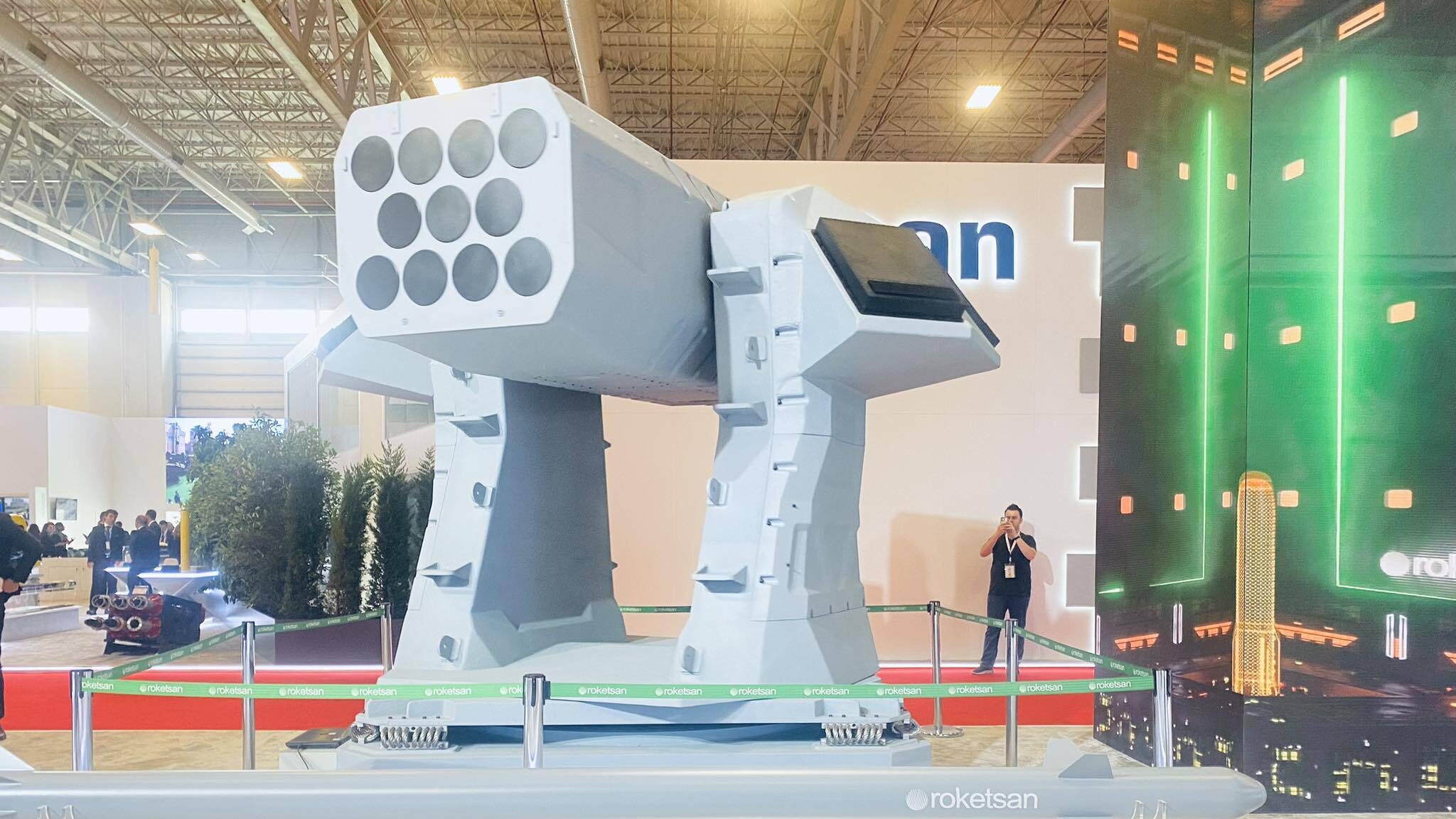
The Levent missile defense system by Roketsan stand at IDEF 2023 in Istanbul, Turkey, on July 26, 2023. (Agnes Helou / Breaking Defense)
Elsewhere at the show, STM announced plans to develop an autonomous unmanned submarine. Although no such system was present for IDEF, the company has expertise in unmanned aerial systems with swarming capabilities, and plans to apply this knowledge to the underwater vehicle market.
The Turkish company will concentrate on full autonomy in this submarine, with an option of swarming capabilities for the underwater vehicle down the road.
“STM have been dealing with submarines for quite a long time, we are building submarines we are modernizing submarines, and in parallel we are the first and the biggest Turkish loitering munition producing firm,” STM general manager Ozgur Guleryuz told Breaking Defense in an interview on the side of the show.
Guleryuz said that the firm expects the development phase of this autonomous underwater vehicle to be finalized by the second half of 2024, and then the first prototype, which will work for proof of concept for full autonomy, will be ready. He added that the company is working on developing these systems specifically due to an increasing demand and need for underwater technology.
The submarine has not been named, and that the company didn’t reveal its actual size. But it will be based on the STM 500 manned submarine produced by the firm, although likely smaller than that existing design.
“The biggest problem with underwater systems is communication, since it’s not as easy as communicating in the air. When you’re underwater, the conditions change, and the domain waves will not propagate as intended underwater,” Guleryuz explained.
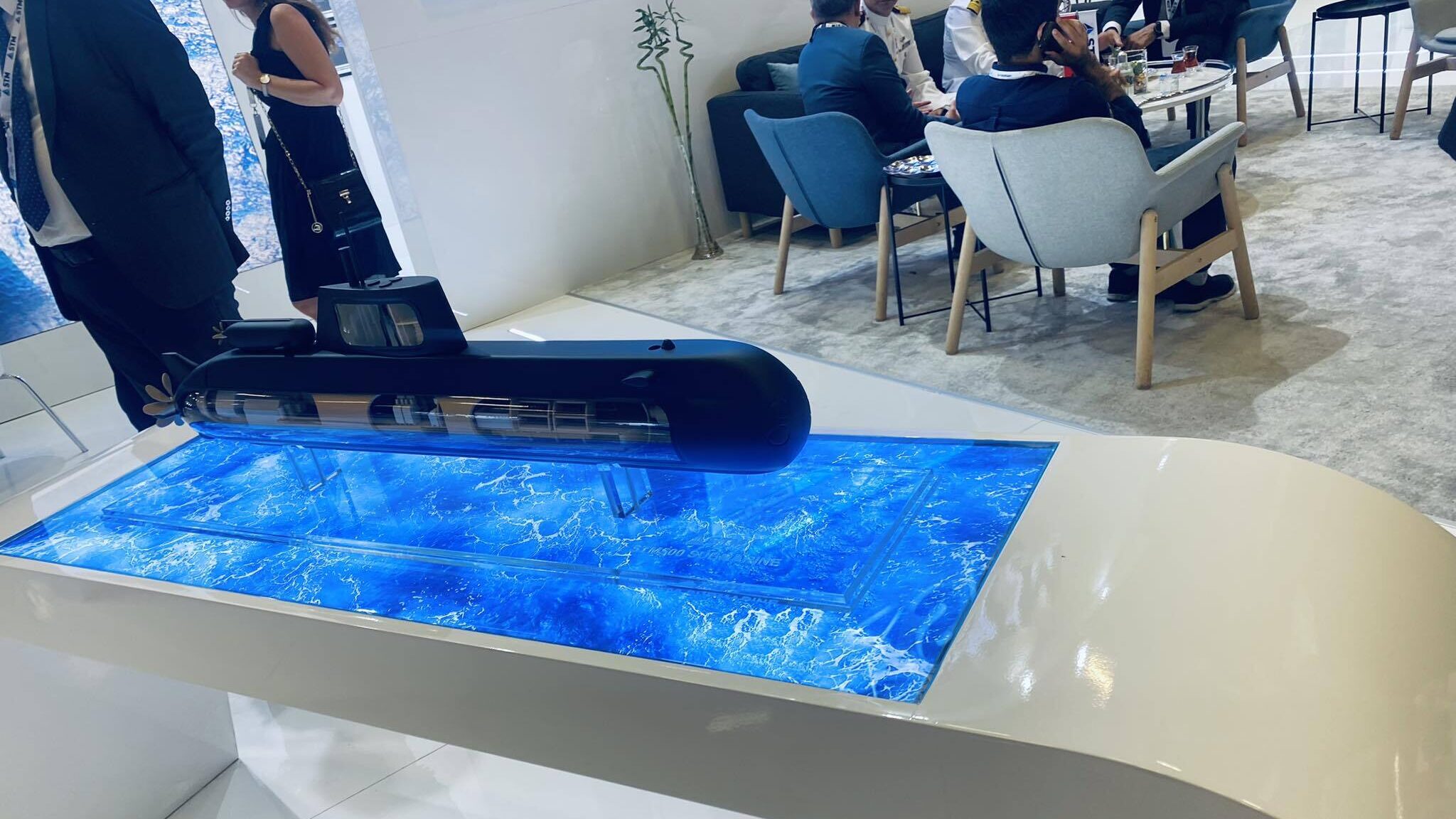 When asked about the cooperation with Gulf countries, Guleryuz expressed the company’s readiness to cooperate with Gulf countries, and assured that STM is ready to transfer its technology to these countries in line with their local requirements.
When asked about the cooperation with Gulf countries, Guleryuz expressed the company’s readiness to cooperate with Gulf countries, and assured that STM is ready to transfer its technology to these countries in line with their local requirements.
In response to a question about whether the war in Ukraine has increased the interest in autonomous systems, Guleryuz was unequivocal.
“There is an increase in interest after the war in Ukraine. It’s much easier to use unmanned systems and save lives in the battlefield. Technology is evolving and more systems will be operational in the future,” he said.
Laser weapons and future tanks: European Defense Fund to spend $1.3B on 54 projects
Development of more novel weapon systems includes the second phase launch of the Tactical Advanced Laser Optical Systems (TALOS) project (TALOS-TWO), designed to support a long term target of developing 100 kilowatt-class laser weapons by 2030.
